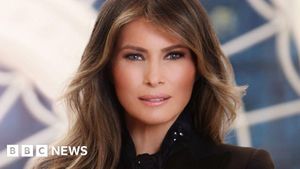Recent developments have signaled a warming of relations between India and China, as diplomatic engagements have intensified following years of tension and conflict. This renewed effort to improve bilateral ties arrives amid changing geopolitical landscapes, particularly with Donald Trump returning to the presidency of the United States.
China’s approach to India can be traced back to the early Cold War era when it engaged diplomatically through the 1954 Agreement on Trade and Intercommunication with Tibet. This agreement introduced the "Five Principles of Peaceful Coexistence," reflecting an image of goodwill and recognition of India’s non-alignment stance. Yet these gestures were also part of Beijing’s broader strategy to counter US containment efforts, as noted by Annunthra Rangan, Senior Research Officer at Chennai Centre for China Studies.
Despite overtures of friendship, historical events reveal the dual nature of Chinese diplomacy. The brutal suppression of the Tibetan uprising and the 1962 Sino-Indian War starkly highlighted China's stance on territorial claims, often superseding diplomatic pleasantries. Fast forward to the present, Prime Minister Narendra Modi's administration has sought warmer ties with China, inviting President Xi Jinping for state visits shortly after Modi took office. Yet, even these gestures have been shadowed by Chinese transgressions along border areas such as Demchok and Chumar.
One of the most significant risings of tensions occurred during the 2017 Doklam standoff, which saw India and China face off over disputed land. Diplomatic efforts—including the Wuhan summit of 2018 and the Mamallapuram summit of 2019—did little to consolidate trust, as tensions flared anew with the deadly Galwan Valley clash of 2020.
This comprehensive pattern indicates how India-China relations oscillate between cautious engagement and abrupt conflicts. A historic October 2024 agreement aiming to reduce tensions highlighted substantial diplomatic efforts, especially during discussions between Modi and Xi at the BRICS summit held in Kazan. Both sides recognized the need to stabilize relations, with India advocating for the resumption of the Kailash Mansarovar pilgrimage and restoration of direct flights between the countries.
Yet, as relations appeared to thaw, fresh provocations emerged. Recent decisions from China to establish new administrative regions within territory claimed by India once again drew the ire of the Indian government, which condemned these moves as illegal. The Ministry of External Affairs unequivocally stated it would not accept any actions undermining India’s territorial integrity.
The backdrop to this re-emerging conflict is intriguingly tied to global geopolitics, particularly with Donald Trump indicating he will assert pressure on nations he perceives as adversarial. Analysts highlight how China is recalibrated by the potential for complications resulting from US policy during Trump's second term. The Chinese leadership appears to be wary of its geographical neighbor collaborating closely with the U.S., typically to the detriment of its own strategic interests.
Recent diplomatic dialogues, including meetings between Indian Foreign Secretary Vikram Misri and Chinese Foreign Minister Wang Yi, reveal attempts to mitigate tensions. During these talks, significant subjects such as direct air services and pilgrimage arrangements were discussed. "Both countries should work together and focus on mutual coordination," noted Wang Yi, emphasizing the necessity of trust-building between the two nations.
The resumption of the Kailash Mansarovar Yatra pilgrimage, scheduled for summer 2025, indicates hope for renewed cultural ties between the countries. While these talks are promising, the question remains: Can India and China maintain momentum, or will historical rivalries resurface?
Many view the recent thaw as a necessary move for China, which has faced economic consequences from its deteriorated relations with India. With its economy impacted by sanctions and tariffs, particularly under Trump’s previously enacted policies, China is recognizing its need for friendly ties with one of Asia's largest markets.
Strategically, India finds itself walking the diplomatic tightrope, trying to appease both the U.S. and China without jeopardizing its sovereignty or national security. The complex trilateral dynamic involving the U.S., China, and India is shifting, and how it plays out could define the geopolitical climate of Asia for the foreseeable future.
While both governments are optimistic about stabilizing relations, the underlying tensions risk boiling over at any moment. External pressures on both sides are intensifying, and as they navigate complicated dialogues, the resolve of both nations will undoubtedly face trials. Should Trump’s administration influence India to align more closely with U.S. policies, the potential for escalation and conflict looms large over the horizon.
Like chess pieces on the global board, India and China must maneuver their responsibilities carefully. The coming months could significantly impact peace and cooperation within Asia, as both nations bravely confront their historical legacies and forge new paths forward. A balancing act is required, and the world watches closely, waiting to see if these attempts to steer clear of conflict can bear fruit.



